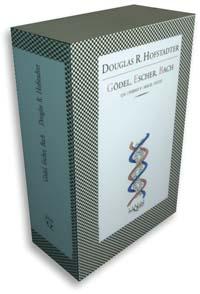3 characters around a theorem

It is a book, but they could be several. At least three; the first, an intense book of mathematical dissemination that analyzes, among other topics, the work of the prestigious mathematician Kurt Gödel; the second, a book on the works of the cartoonist Maurits Cornelis Escher and the musician Johann Sebastian Bach, that analyzes his relationship with the work of Gödel; and the third, a collection of stories that analyzes all the above through fiction.
In the same chapter three parts can appear, always related to the theme of the chapter. This structure is possible because the work of Gödel, Escher and Bach have a great similarity from the mathematical point of view.
Gödel formulated two theorems on the lack of integrity of a system. According to these theorems, a system cannot be fully integrated. To explain this complex expression, the writer gradually analyzes the formal systems and their characteristics, whether the mathematical concept of the term system, be it drawing or musical composition.
In the fiction section he uses characters taken from classical Greece, including Achilles and Dortoka, who appear in the arguments of the philosopher Zenon Eleakoa. Together with other characters, they analyze the paradoxes and mathematical propositions from different points of view from different fields. In fact, the conversations between these characters are organized as works by Bach. They are mathematical games, converted into literary games with the inspiration of music.
Gödel, Escher, the book Bach Douglas R. Hofstadter is the best-known work of the American writer. "I've been thinking about shaping this book for almost twenty years," the author says in the foreword. Published in 1979, it has become a classic of mathematical disclosure. In 1980 he won the Pulitzer Prize.





